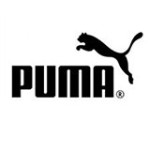[gallery_bank type=”images” format=”thumbnail” title=”true” desc=”false” responsive=”true” animation_effect=”pulse” album_title=”false” album_id=”1″]
 The company was formed in 1924 as Gebrüder Dassler Schuhfabrik by Adolf and Rudolf Dassler. The relationship between the two brothers deteriorated until the two agreed to split in 1948, forming two separate entities, Adidas and Puma. Both companies are currently based in Herzogenaurach, Germany. Following the split from his brother, Rudolf Dassler originally registered the new-established company as Ruda, but later changed to Puma. Puma’s earliest logo consisted of a square and beast jumping through a D, which was registered, along with the company’s name, in 1948. Puma’s shoe designs feature the distinctive “Formstrip”,[ with clothing and other products having the logo printed on them. A few months prior to the 1970 FIFA World Cup, Armin Dassler (Rudolf’s son) and his cousin, Horst Dassler (Adi’s son), sealed an agreement which was dubbed “The Pelé pact”. This agreement dictated that Pelé would be out of bounds for both Adidas and Puma. However, Pelé complied with a request by Puma’s representative Hans Henningsen to increase the awareness and profile of Puma after he received $120,000 to wear the Formstripes. At the opening whistle of a 1970 World Cup finals match, Pelé stopped the referee with a last-second request to tie his shoelaces before kneeling down to give millions of television viewers a close-up of his Pumas. This outraged Horst, and future peace agreements were called off.
The company was formed in 1924 as Gebrüder Dassler Schuhfabrik by Adolf and Rudolf Dassler. The relationship between the two brothers deteriorated until the two agreed to split in 1948, forming two separate entities, Adidas and Puma. Both companies are currently based in Herzogenaurach, Germany. Following the split from his brother, Rudolf Dassler originally registered the new-established company as Ruda, but later changed to Puma. Puma’s earliest logo consisted of a square and beast jumping through a D, which was registered, along with the company’s name, in 1948. Puma’s shoe designs feature the distinctive “Formstrip”,[ with clothing and other products having the logo printed on them. A few months prior to the 1970 FIFA World Cup, Armin Dassler (Rudolf’s son) and his cousin, Horst Dassler (Adi’s son), sealed an agreement which was dubbed “The Pelé pact”. This agreement dictated that Pelé would be out of bounds for both Adidas and Puma. However, Pelé complied with a request by Puma’s representative Hans Henningsen to increase the awareness and profile of Puma after he received $120,000 to wear the Formstripes. At the opening whistle of a 1970 World Cup finals match, Pelé stopped the referee with a last-second request to tie his shoelaces before kneeling down to give millions of television viewers a close-up of his Pumas. This outraged Horst, and future peace agreements were called off.
- 1920: Rudolf Dassler and his brother Adolf start making sports shoes
- 1924: Foundation of Gebrüder Dassler Schuhfabrik, Herzogenaurach, Germany
- 1948: Foundation of Puma Schuhfabrik Rudolf Dassler (1 October), Introduction of the ATOM, Puma’s first football shoe
- 1949: Rudolf Dassler has the idea of football shoes with removable studs. He begins working on their development and production.
- 1952: Introduction of the SUPER ATOM
- 1953: Development of ATOM’s successor: the BRASIL
- 1958: Introduction of Puma’s signature “Formstripe” at the FIFA World Cup in Sweden
- 1959: The company is transformed into a limited partnership named Puma-Sportschuhfabriken Rudolf Dassler KG
- 1960: Introduction of the vulcanization production technique
- 1966: Launch of the WEMBLEY, the predecessor model to the Puma King
- 1968: Launch of the legendary KING. Puma is the first manufacturer to offer sports shoes with Velcro fasteners
- 1968: Launch of the SUEDE
- 1973: Launch of the CLYDE. Designed for basketball player Walt “Clyde” Frazier, as a wider-fitting version of suede model
- 1974: Rudolf Dassler dies. His sons Armin and Gerd take over the company’s management
- 1976: Introduction of the S.P.A.-Technology
- 1986: Transformation into a stock corporation
- 1989: Launch of the TRINOMIC sport shoe system
- 1989: Rudolf’s sons Armin and Gerd Dassler agreed to sell their 72 percent stake in Puma to Swiss business Cosa Liebermann SA.
- 1990: Introduction of INSPECTOR, a growth control system for children’s shoes
- 1991: Launch of the DISC SYSTEM sports shoe
